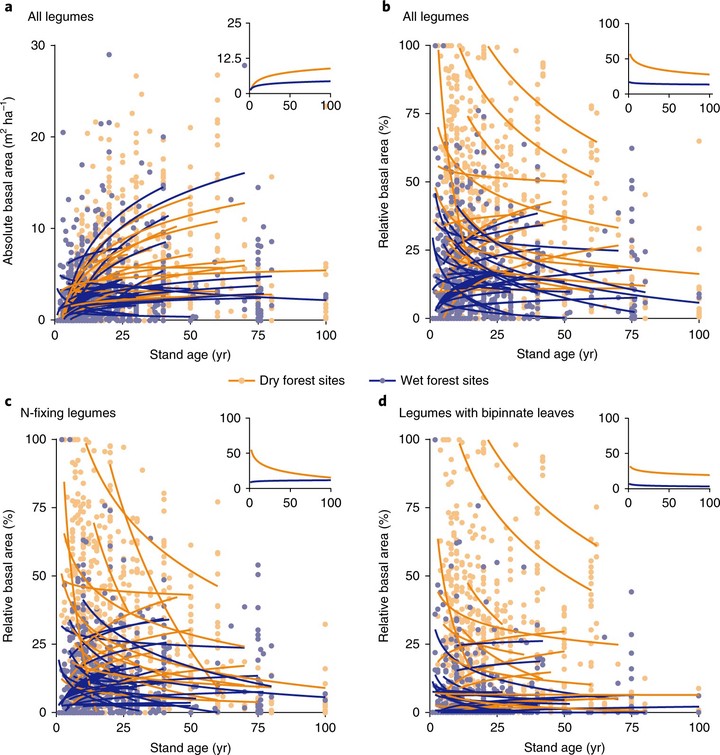Legume abundance along successional and rainfall gradients in Neotropical forests.

Abstract
The nutrient demands of regrowing tropical forests are partly satisfied by nitrogen-fixing legume trees, but our understanding of the abundance of those species is biased towards wet tropical regions. Here we show how the abundance of Leguminosae is affected by both recovery from disturbance and large-scale rainfall gradients through a synthesis of forest inventory plots from a network of 42 Neotropical forest chronosequences. During the first three decades of natural forest regeneration, legume basal area is twice as high in dry compared with wet secondary forests. The tremendous ecological success of legumes in recently disturbed, water-limited forests is likely to be related to both their reduced leaflet size and ability to fix N2, which together enhance legume drought tolerance and water-use efficiency. Earth system models should incorporate these large-scale successional and climatic patterns of legume dominance to provide more accurate estimates of the maximum potential for natural nitrogen fixation across tropical forests.